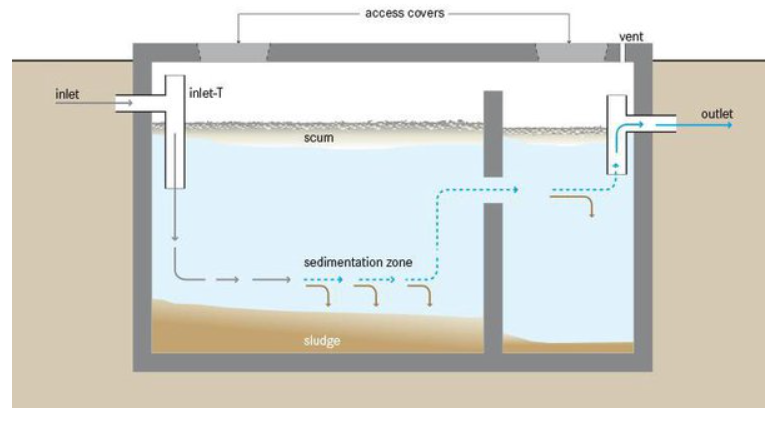A septic tank is an underground chamber made of concrete, fibreglass, or plastic. This self-contained domestic wastewater treatment system is commonly used in rural areas or properties without access to the national sewage system. The chamber allows solids to settle to the bottom of the tank, leaving liquids to flow into a drain field for further purification, where it is then absorbed into the soil.
According to the Centre for Ecology & Hydrology, it is estimated that 300,000 to 500,000 properties in England and Wales are likely to have a septic tank

Grease and septic tanks
Grease is problematic because it can clog and disrupt the system’s functionality. Septic tanks rely on ‘helpful’ bacteria to break down the waste. When grease enters the tank, it solidifies on the top and hampers the natural breakdown. This can lead to blockages and septic tank backups.
Septic tank backup
Septic tank backup is where wastewater and sewage fail to flow properly and instead reverse their direction. This can cause backflow to enter into sinks, toilets, or drains, leading to potential health hazards.
Preventing septic tank backup
To prevent grease from building up inside the tank, there are several things that homeowners can do. Firstly, avoid pouring cooking oils and fats down the drain. Place them in the household bin instead.

Secondly, using enzyme-based washing-up products help to break down grease and help maintain a healthy septic system.
Try to avoid using greasy moisturisers and lotions. These might seem harmless, but if used excessively these can build up inside the tank when you have a shower or bath.
CCTV drainage surveys Kingsbury are available if you notice a problem with your tank. It is always advisable to seek expert help from professionals such as www.wilkinson-env.co.uk/drainage-services-cctv-surveys-midlands/drain-jetting/drain-jetting-kingsbury/ who can identify and diagnose the issue.
The best thing you can do for your septic tank is learn how to use it. By familiarising yourself with your tank, the quicker you will notice negative changes, which can then be dealt with quickly and efficiently.

